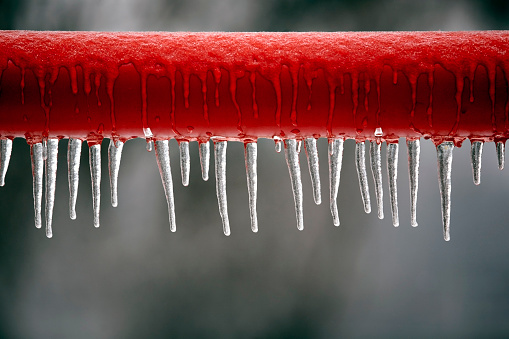
Spoiler Alert: Winter is already here. But it’s never too late to take measures to protect your home from cold, harsh conditions — until it is. Let’s not wait until the next big snowstorm to find out.
Brutal winter weather can cause damage to both the outside and inside of your home. Whether it’s a pesky air draft or a burst pipe, damage caused from sub-freezing temperatures can be inconveniently expensive. If you haven’t already, it’s important to prepare your home — even now. Check out our winter home maintenance checklist to keep your home safe and warm from the worst winter may still have in store.
- Focus on Your Heating System
One of the most obvious home necessities during the winter is heat, which makes now a great time to maintain or upgrade your heating system. Your home should be the place you feel most comfortable, and freezing temperatures shouldn’t change that.
By hiring a professional like Madsen to inspect your boiler, furnace, and HVAC system, you can make sure the need for repairs, cleanings, or upgrades can be taken care of to make sure your system is running as efficiently and safely as possible. Not only will it help ensure you’re nice and warm the rest of winter, but it will also save you from costly maintenance of bigger problems that may occur if the small things go ignored.
- Check For Air Leaks
As temperatures drop from day to day, there are certain areas more susceptible to heat loss. Unwelcomed drafts can sneak into your home through door frames, windows, or other small gaps in your foundation. We often crank the heat when we feel a draft, which increases our energy bill without fixing the root of the problem. Instead, try to find the source of the draft and use a more affordable, DIY solution.
Air leaks can be easily stopped by:
– Putting weatherstrips or caulking around vulnerable areas
– Insulating windows with film
– Adding insulation in the attic to prevent ceiling heat loss
– Covering the underside of door frames with thick towels to close the cracks
- Prevent Frozen Pipes
Frozen pipes can become burst pipes that negatively affect your entire home. It may result in water and structural damage, unsafe conditions (if outside), and a hefty repair bill. Frozen pipes aren’t uncommon in areas of the home or yard that aren’t getting a lot of use in the winter (swimming pool supply lines, hose bibs, water sprinkler lines, unheated basement/attic pipes, etc.) or even those with little or no insulation in exterior walls, so be sure to stay on top of your taps.
Signs of a frozen pipe include a lack of running water, visible frost on any exposed water pipes, sections of drywall or ceilings looking damp, or strange odors coming from the faucet or drain. You can prevent frozen pipes by applying electrical heating tape to exposed pipes, letting your faucets drip with cold water all day, or just keeping the garage door closed to keep cold air out of the house and away from the plumbing.
- Be Storm-Ready
Snowstorms can be pretty unpredictable — let’s face it, the weatherman isn’t always right. So while you may always be on top of the weather radar, it’s smart to ensure your house is prepared for anything at any time by checking off essential to-do’s like:
– Get an emergency kit with water, canned goods, and flashlights
– Have snow shovels or blowers to make clearing your driveway after a blizzard easier
– Trim tree branches to help you avoid any structural damage from high winds
– Invest in a portable generator in case of a long-lasting power outage
– Waterproof your home by installing a sump pump into the basement and routing gutters away from your home
- Maintain the Water Heater
There’s nothing quite like a hot shower or warm bath when it’s freezing outside. But there’s nothing worse than hopping in and getting nothing but ice-cold water.
Prevent hot water loss by servicing your water heater. Check the heater’s temperature, test the pressure valve, and inspect the anode rod. You can also add insulation to the pipes and tanks too as an added safeguard. If you don’t feel comfortable taking these tasks on yourself, consider calling a professional to help do it for you.
- When in Doubt, Call the Pros
Winter maintenance isn’t always the easiest. And even with a helpful guide like this, you may not know everything you should be looking for. If you need help making sure your home is as safe and warm as it should be this winter, contact Madsen Inc. today.


